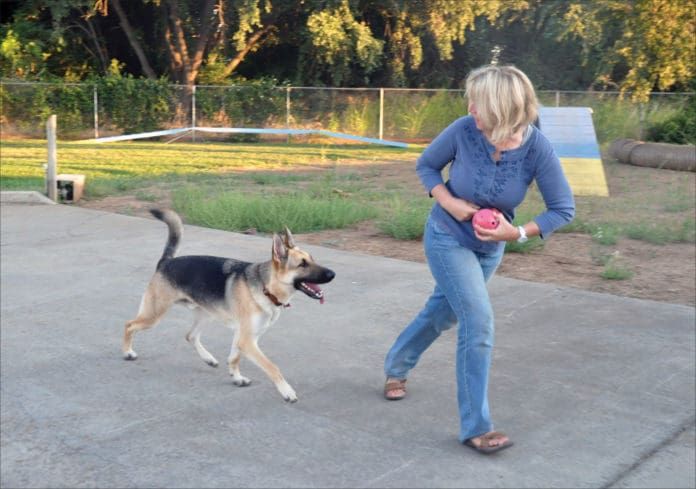It’s frustrating at best, dangerous at worst, when you can’t get your dog to come to you. Indoors, he may be suspicious that you’re going to do something aversive, such as treat his ear infection, or put him in his crate. Outdoors, he may also have an aversive association with coming to you, or he may just be having entirely too much fun. Whatever the cause, here are five tips for handling the crisis:

1. Stop calling the dog
Seriously. If he’s already not coming, calling him again isn’t going to miraculously make it happen. In fact, you’re likely to make your tone more commanding or angry, which is even less likely to make him come. So stop calling him and do something else.
2. Cue your dog for a different behavior
Does he love to target? Give him your touch cue and offer your hand as the target. It just so happens he has to come to you to touch your hand! Is his favorite cue “Find it”? Toss treats at your feet and give him the cue. There he is, gobbling them up right at your feet. Do his eyes light up when you ask him to weave?
Ask him to start weaving – lo and behold, he’s right under you! Does he drop like a rock on his “Down” cue? Cue him to down and stay – and then walk up to him with a happy smile and lots of treats. Is a car ride his idea of heaven? Open the car door and ask him if he wants to go for a ride. Got him! And, yes, now you have to take him for a ride or he might not come the next time you use this ploy.
3. Invite your dog to play.
Grab your tennis ball collection and ask him to start fetching. Pull out his favorite toy and offer to tug with him. Start swinging his flirt pole. Squeak a squeaky toy. Roll around on the ground. Blow bubbles. Show him his favorite puzzle toy and invite him to play with it. If you have more than one dog, play with your other dog to spark his interest. Whatever games he normally loves to engage in with you, start playing!
4. Run the other way.
Dogs love to chase things that move. Try running in the opposite direction instead of chasing after him. Yell “Hey, hey, hey!” or blow a loud whistle to get his attention and when he glances in your direction, run as fast as you can away from him. This works especially well if you incorporated “run away” in your training to get an enthusiastic recall.
5. Use an emergency recall cue.
You may already have one of these and not know it. Your emergency cue is a word that has a 100 percent positive association for your dog. Perhaps it’s “Cookies!” or “Dinner!” Stop and think; is there a word you have used with your dog that always means something wonderful? If so, you can use that word carefully as an emergency recall cue.
A caveat: If you use your emergency word and then do something aversive to your dog, you’ll “poison” it and lose the power of that word, too. If you haven’t created one accidentally already, you can train an emergency recall cue by associating your new chosen word (or a very loud whistle) with spectacular treats and play. Just remember to always follow it with fantastically positive stuff.
And, finally, I don’t think I have to say this to WDJ readers, but here I go anyway: Don’t ever punish your dog when he finally comes to you, no matter how aggravated you are. Put on your best happy face, tell him how wonderful he is, and give him all kinds of positive reinforcement. If you are angry with him when you finally get your hands on him, it will only be that much harder to get him to come to you the next time.
Pat Miller, CBCC-KA, CPDT-KA, is WDJ’s Training Editor. Pat is also the author of many books on positive training.






